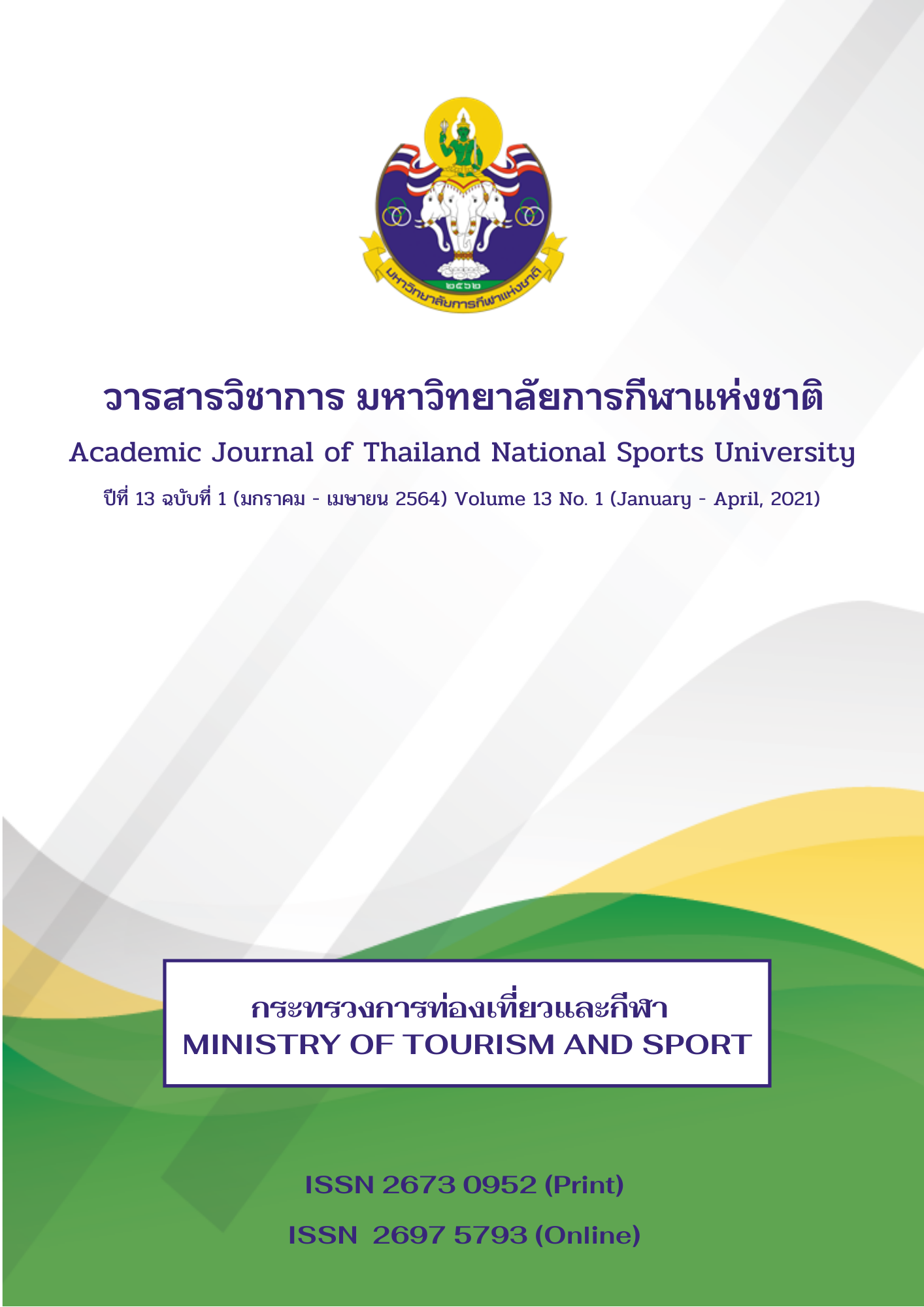THE RESULTS OF ARCHERY BALANCE WITH STABILITY AND ACCURACY ARCHERY RECURVE BOW OF MALE ATHLETES INSTITUTE OF PHYSICAL EDUCATION CHON BURI CAMPUS
Main Article Content
Abstract
The objectives of this research were to study the effects of archery practice on a balance board influencing the precision of the recurve bow of male athletes in the Institute of Physical Education, Chon Buri Campus, and to compare the stability and accuracy of the archery between the control group and experimental group of male athletes in the Institute of Physical Education, Chon Buri Campus. The sample group consisted of the archery athletes in the Institute of Physical Education, Chon Buri campus. The 20 males in the sample group aged between 18-23 years old. The research instruments used in this study were a normal archery training program, normal archery program in tandem with balance board practice, balance record form, archery accuracy score record. The instruments were created and approved by the experts. The practice was conducted for 8 weeks, 3 days a week. Paired Samples t-test statistics, the percentage, mean and standard deviation were used in the data analysis.
The research was found that:
- Balance and accuracy in recurve bow before the training and after the 8th week training of the control group who trained in the archery training program and the experimental group trained by the balancing program using the shape board for 8 weeks were different with statistical significance at the level of .05
2. The comparison of the balance and accuracy in recurve bow before the training and after the 8th week training between the control group and the experimental group before practicing balance and accuracy between the control group and the experimental group were not significantly different at the statistic level of .05 and after the 8th week training, balance and accuracy scores of the control group and the experimental group were significantly different, at the statistic level of .05
Article Details
The published article is a copyright of the Academic Journal of Thailand National Sports University. The passage appeared in each article in this academic journal is a perspective of each author which is not related to the journal. Each author is required to be responsible for all components of his/her own article. If there are any mistakes, each author must be responsible for those mistakes on his/her own.
References
Lee, Kisik. (2010). Coaching Philosophy. Retrieved from https://www.kslinternationalarchery.com/AboutUs/CoachingPhilosophy.html
Massion, J. (1994). Postural control system. Current Opinion In Neurobiology, 4, 877-887.
O'Sullivan S. B. (1994). Motor control assessment. In S. B. O'Sullivan & T. J. Schmitz (Eds.), Physical rehabilitation: Assessment and treatment. Philadelphia: F.A. Davis Company.
Santani Khruekhon. (2005). Balance exercise results with a balance training board in people with unstable ankle work conditions. Department of Physical Therapy, Mahidol University.
Sarinya Buranasapasit. (2012). The effect of training on the core muscles on strength and shape: Body in the elderly. Journal of Faculty of Physical Education, 15(2), 119-131.
Warin Krityakiarana. (2012). Proprioceptive sense in Thai classical dancers. Institute of Culture and Arts Journal, 14(1), 77–84.


